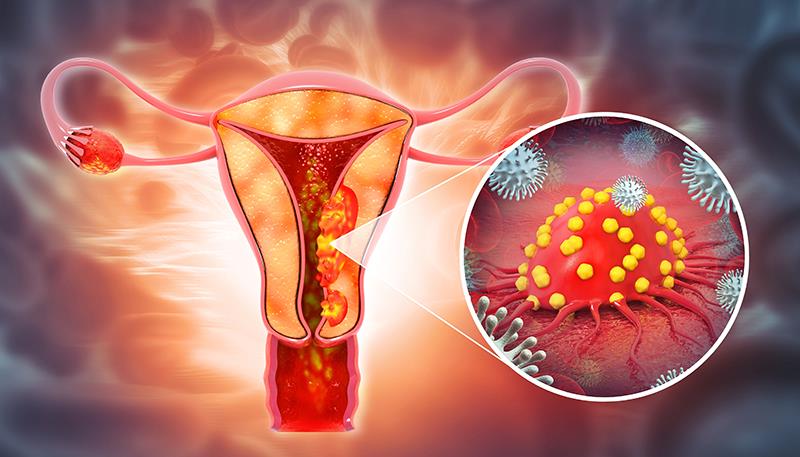Selinexor maintenance shows consistent benefit in TP53wt endometrial cancer





Selinexor maintenance therapy continues to show consistent clinical benefit in patients with TP53 wild-type (TP53wt) advanced or recurrent endometrial cancer, regardless of mismatch repair (MMR) status, according to the ENGOT-EN5/GOG-3055/SIENDO trial presented at ESMO Gyn 2025.
Selinexor is an investigational oral maintenance agent targeting TP53wt endometrial cancer. [J Clin Oncol 2023;41:5400-5410]
“Consistent improvements in time to first subsequent therapy (TFST), time to second disease progression (PFS2), and time to second subsequent therapy (TSST), as signals of treatment durability and cumulative effectiveness of subsequent treatment, may further characterize the clinical benefits of selinexor in TP53wt endometrial cancer and have the potential to prolong systemic therapy benefit,” said the researchers.
The SIENDO subgroup analysis included 113 patients with TP53wt endometrial cancer who were randomized in a 2:1 ratio to receive maintenance therapy with either selinexor 80 mg once/week (n=77) or placebo (n=36). Baseline characteristics were similar in both arms. [ESMO Gyn 2025, abstract 44P]
At data cut-off (April 1, 2024), selinexor-treated patients in the TP53wt subgroup achieved a median progression-free survival (PFS) of 28.4 months, with a consistent PFS benefit observed regardless of MMR status (39.5 months in the proficient MMR [pMMR] cohort and 13.1 months in the deficient MMR [dMMR] cohort).
In this long-term follow-up, intermediate endpoints including TFST, PFS2, and TSST were assessed as supportive evidence for the observed PFS benefit in TP53wt pMMR and dMMR subgroups.
In the pMMR subgroup, the median TFST was not reached in the selinexor arm compared with 8.5 months in the placebo arm (hazard ratio [HR], 0.31; one-sided pnominal=0.0002). In the dMMR subgroup, selinexor demonstrated a longer median TFST compared with placebo (25.7 vs 4.8 months; HR, 0.47; one-sided pnominal=0.0659).
Improvements in median PFS2 were observed with selinexor vs placebo for the pMMR subgroup (43.2 vs 30.1 months; HR, 0.56; one-sided pnominal=0.0611) and were not reached in either treatment arm for the dMMR subgroup (HR, 0.43; one-sided pnominal=0.1229).
“The PFS2 data in the dMMR subgroup in both arms may be an observation of patients receiving immunotherapy as subsequent therapy, suggesting that selinexor does not negatively impact the efficacy of subsequent immunotherapy use,” noted the researchers.
Taken together, the overall TP53wt subgroup showed improvements in median TFST (31.7 vs 10.6 months; HR, 0.41; one-sided pnominal=0.0002) and PFS2 (not reached vs 35.2 months; HR, 0.62; one-sided pnominal=0.0581) across MMR subgroups treated with selinexor vs placebo.
Moreover, median TSST was not reached with selinexor vs 22.1 months with placebo (HR, 0.47; one-sided pnominal=0.0041).
In terms of safety, the most common grade ≥3 treatment-emergent adverse events (TEAEs) in patients treated with selinexor were neutropenia (20 percent), nausea (13 percent), and thrombocytopenia (10 percent).
“These TEAEs, including grade ≥3, were generally manageable and reversible with no new safety signals identified,” said the researchers.
The researchers mentioned that there is an ongoing phase III XPORT-EC trial (ENGOT-EN20/GOG-3083/XPORT-EC-042) that will further investigate selinexor maintenance therapy in advanced/recurrent TP53wt endometrial cancer.